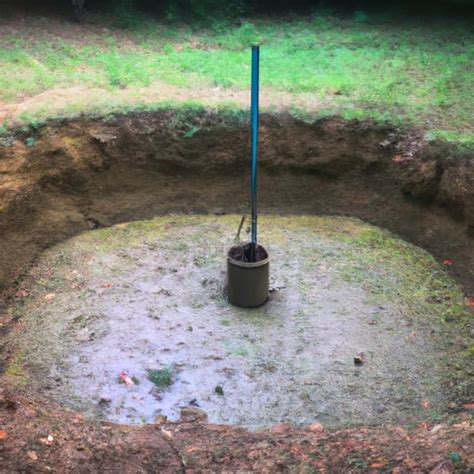Understanding the Lifespan of an Unused Well: Factors Affecting Water Quality and Safety

How Long Can a Well Sit Unused? Factors to Consider and Maintenance Strategies
Introduction:
Water wells are valuable assets that provide a reliable source of clean water for drinking, irrigation, and various other purposes. However, circumstances may arise where a well remains unused for an extended period. Understanding the implications of leaving a well unused is crucial to ensure its longevity and prevent potential issues. This comprehensive guide explores the factors that influence how long a well can sit unused, along with effective maintenance strategies to keep it in optimal condition.
Factors Affecting the Duration of Well Inactivity:
- Well Construction and Materials: The design and materials used in well construction play a significant role in its ability to withstand periods of inactivity. Proper casing and sealing prevent contamination and ensure the integrity of the well.
- Water Quality: The chemical composition and mineral content of the water can impact its stability over time. Some minerals tend to precipitate out of solution, leading to scale buildup and potential clogging of the well.
- Aquifer Characteristics: The geological characteristics of the aquifer, such as its depth, pressure, and flow rate, influence how well it can maintain water quality and prevent stagnation.
- Climate and Weather Conditions: Extreme weather events, temperature fluctuations, and seasonal changes can affect the water level, pressure, and overall condition of the well.
- Regular Maintenance and Usage: Well maintenance practices, including periodic pumping, disinfection, and water testing, contribute to the longevity of the well and prevent issues associated with prolonged inactivity.
General Guidelines for Well Inactivity:
While the specific duration a well can sit unused varies based on the factors mentioned above, general guidelines can provide an approximate timeframe:
- Short-Term Inactivity (1-3 Months): In general, a well can remain unused for a short period, such as during a vacation or seasonal change, without experiencing significant problems.
- Medium-Term Inactivity (3-6 Months): Leaving a well unused for a few months may require periodic maintenance and monitoring to prevent stagnant water and potential bacterial growth.
- Long-Term Inactivity (Over 6 Months): Extended periods of inactivity, especially beyond six months, significantly increase the risk of issues such as corrosion, mineral buildup, and contamination. Regular maintenance and reactivation procedures are essential.
Maintenance Strategies for Unused Wells:
To ensure the longevity and proper functioning of an unused well, regular maintenance is crucial:
- Periodic Pumping: Regularly pumping water from the well, even if not for immediate use, helps prevent stagnation, maintains water flow, and removes sediments that could accumulate over time.
- Disinfection: Periodically disinfecting the well with appropriate chemicals or ultraviolet (UV) treatment helps eliminate bacteria, viruses, and other microorganisms that may proliferate in stagnant water.
- Water Testing: Regular water testing is essential to monitor water quality and identify any changes in chemical composition or contamination levels.
- Well Inspection: A thorough inspection by a qualified well contractor can identify potential issues, such as corrosion, damage, or blockages, and address them promptly.
Reactivation of an Unused Well:
If a well has been unused for an extended period, it requires careful reactivation to ensure safe and reliable water usage:
- Initial Inspection: A thorough inspection by a qualified professional is essential to assess the condition of the well, identify any issues, and determine the necessary reactivation procedures.
- Disinfection: Thorough disinfection of the well, including the pump, casing, and plumbing system, is crucial to eliminate bacteria and ensure water safety.
- Water Testing: Extensive water testing is necessary to verify that the water meets drinking water standards and is free from contaminants.
- Gradual Use: Initially, it's recommended to use the water sparingly and monitor its quality closely to ensure it remains safe and free of issues.
Conclusion:
The duration a well can sit unused without experiencing problems depends on various factors, including well construction, water quality, aquifer characteristics, climate, and maintenance practices. Regular maintenance, periodic pumping, disinfection, water testing, and well inspections are essential to keep an unused well in optimal condition and prevent potential issues. If a well has been unused for an extended period, careful reactivation procedures are necessary to ensure safe and reliable water usage. By following these guidelines and maintenance strategies, well owners can prolong the lifespan of their wells and enjoy a continuous supply of clean, fresh water.
